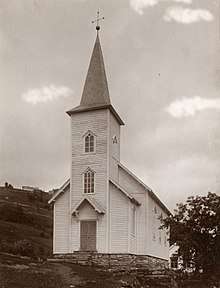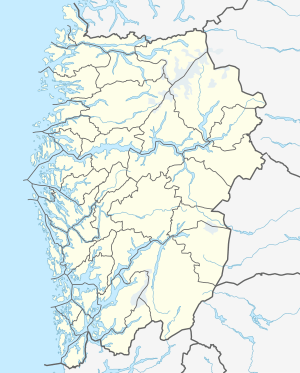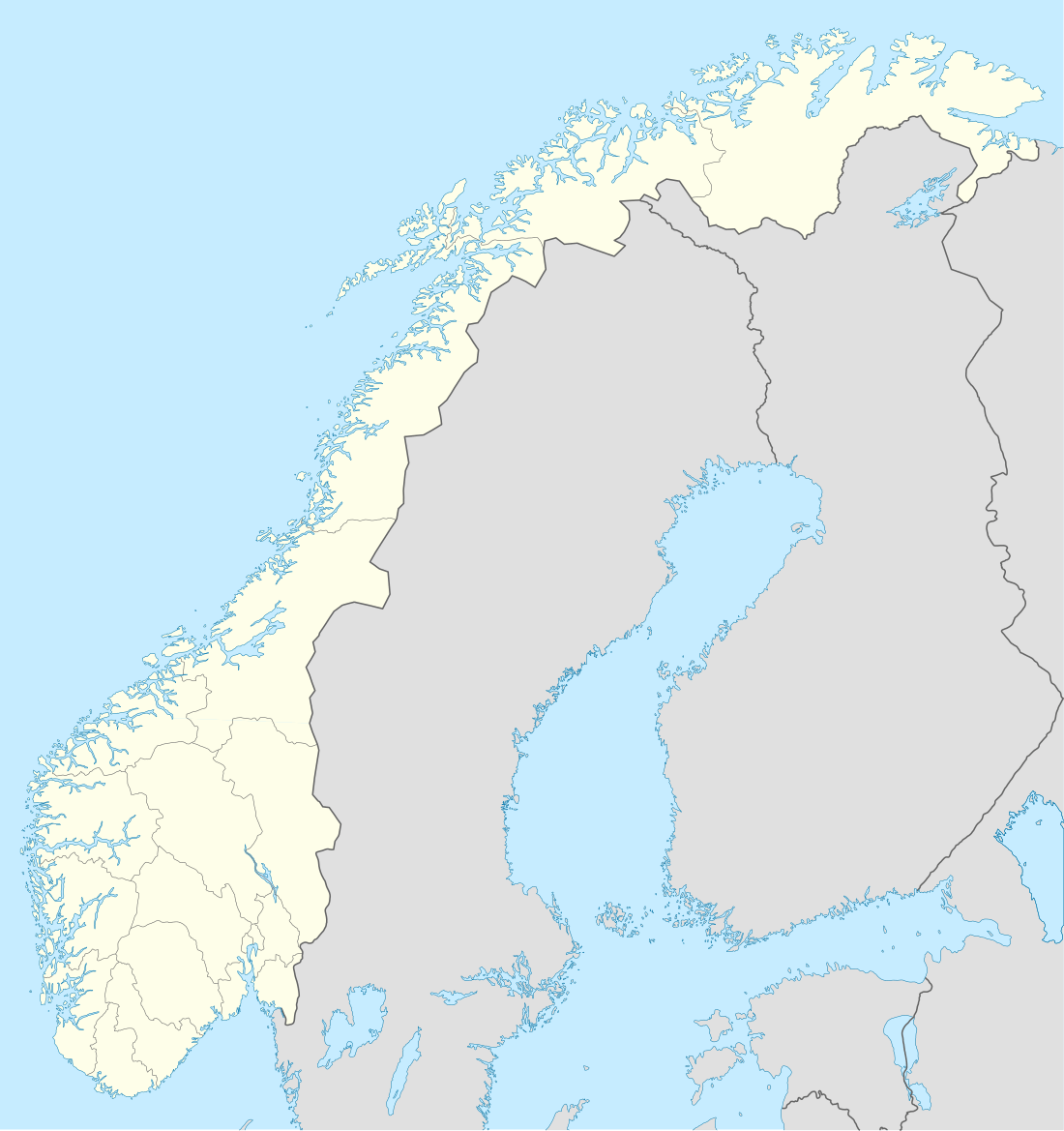Fet Church (Luster)
Fet Church (Norwegian: Fet kyrkje) is a parish church in Luster Municipality in Vestland county, Norway. It is located in the village of Fet in the Indre Hafslo area. It is one of the churches for the Fet og Joranger parish which is part of the Sogn prosti (deanery) in the Diocese of Bjørgvin. The white, wooden church was built in a long church style in 1894 by the master builder John Alver using designs by an unknown architect. The church seats about 220 people.[1][2] The church was consecrated on 12 November 1894 by Bishop Frederick Waldemar Hvoslef.
| Fet Church | |
|---|---|
| Fet kyrkje | |
 View of the church | |
 Fet Church Location of the church  Fet Church Fet Church (Norway) | |
| 61.3620°N 7.2616°E | |
| Location | Luster Municipality, Vestland |
| Country | Norway |
| Denomination | Church of Norway |
| Churchmanship | Evangelical Lutheran |
| History | |
| Status | Parish church |
| Consecrated | 12 November 1894 |
| Architecture | |
| Functional status | Active |
| Architect(s) | Unknown |
| Architectural type | Long church |
| Completed | 1894 |
| Specifications | |
| Capacity | 220 |
| Materials | Wood |
| Administration | |
| Parish | Fet og Joranger |
| Deanery | Sogn prosti |
| Diocese | Bjørgvin |
From the hill where Fet Church is located, it is not long way away to the neighboring Joranger Church. Historians have often wondered why these two churches were built in the Middle Ages so close together. Jon Laberg, the author of the old local history book for Hafslo discussed the reason that Fet and Joranger each have their own churches, even though these farms lie near to each other. Laberg thinks that the owners of these farms could not reach agreement on a common church, so they each built their own church. Today, these two churches belong to the same parish.[3]
History
The earliest existing historical records of the church date back to the year 1340, but the church was built before that time. Around 1650, the old stave church was torn down and replaced with a new church on the same site. The new church was a timber-framed church. In 1894, the old church was torn down and a new church was constructed about 100 metres (330 ft) west to a more stable building site.[4] During the 1960s, there were some renovations. Heating work was improved so the church wasn't as cold and drafty, new flooring was installed, and a new roof was installed. About 20 years later in the 1980s, the church was enlarged to make room for a bathroom and sacristy on the northeast side of the building.[3]
See also
References
- "Fet kyrkje". Kirkesøk: Kirkebyggdatabasen. Retrieved 2020-01-17.
- "Oversikt over Nåværende Kirker" (in Norwegian). KirkeKonsulenten.no. Retrieved 2020-01-17.
- Henden Aaraas, Margrethe; Vengen, Sigurd; Gjerde, Anders. "Fet kyrkje" (in Norwegian). Fylkesarkivet. Retrieved 2020-01-17.
- "Fet kyrkje" (in Norwegian). Norwegian Directorate for Cultural Heritage. Retrieved 2020-01-17.

